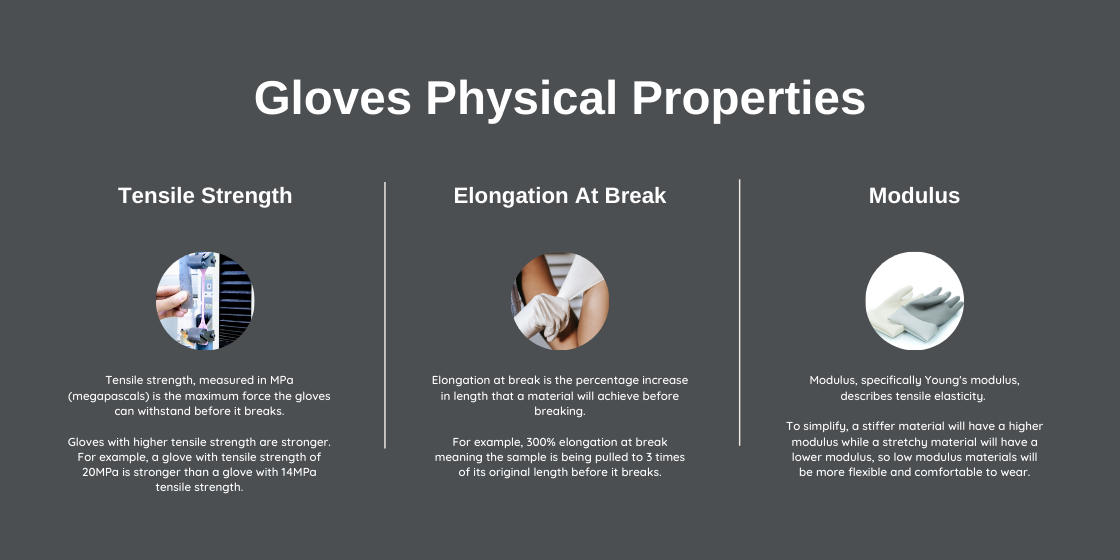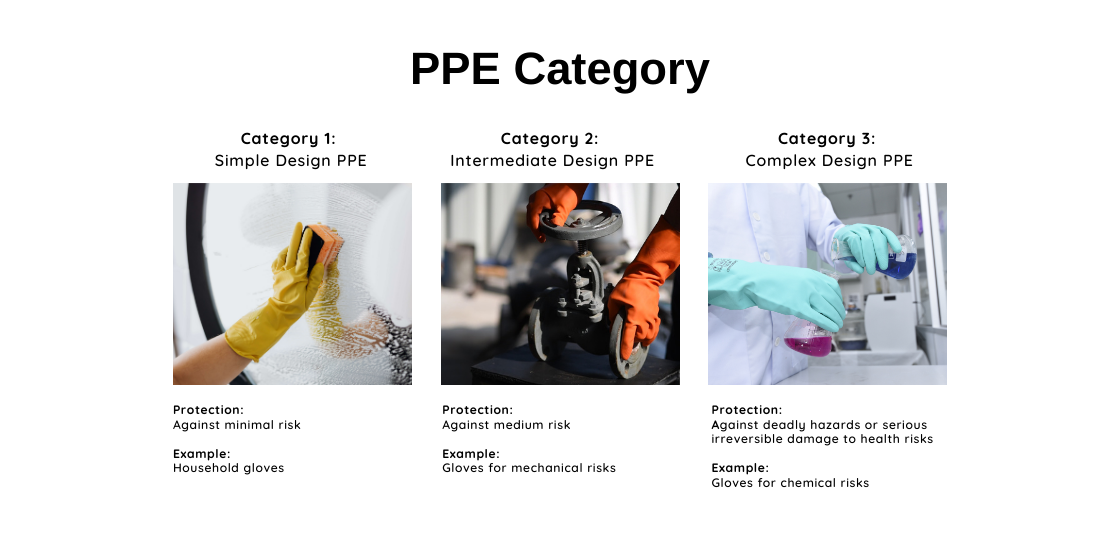As we discussed in our last blog post, rubber gloves scams are on the rise and we have came up with an article to teach you on how to identify legit rubber gloves manufacturers from Malaysia.
In this article, we would like to guide you on how to choose a reliable gloves manufacturer for your business, even those manufacturers are not based in Malaysia.
#1. Price isn’t everything
We understand that product price is extremely important for your gloves business, but it shouldn’t be the only factor for you to choose a gloves manufacturer. What we want to stress here is that there are some other factors that will need your attention more than the price.
Product quality, customer service and support, ideal lead time, MOQ, product compliance to certain regulations etc. they are all equally important during your supplier research stage and decision making stage.
Always make a list of the most important attributes that you will be considering and compare them. Since the final product is a reflection of everything your brand stands for, so it is not something you can afford to take it lightly by rushing to the lowest price supplier.
Ideally, you should find a manufacturer that delivers quality product on time at a cost that will still allows you to be competitive in your market.
#2. Country of origin
When looking for gloves manufacturers, you will need to consider from where you want to source the gloves products.
Top countries that are producing rubber gloves include Malaysia, Thailand, Vietnam, Taiwan, China and Sri Lanka. These countries are very famous in making gloves, some are due to its geographical advantage that has rich natural resources of rubber trees.
According to facts and details website, Thailand, Indonesia and Malaysia account for about 70 percent of global supply of rubber.
If you are about to engage with the manufacturer from a particular country, don’t forget to check their credibility and reputation with official trade association in that country. If the gloves manufacturer is based in Malaysia, you can always verify their credibility from MARGMA.
#3. Consider the product quality
Gloves products with consistent quality are important for a gloves business. But what makes up a good quality glove? What criteria you will need to pay more attention to?
3.1 Visual
Other than looking at the color consistency in a batch of gloves, some examples of visual defects on glove eg. folded fingers, folded lines, wrinkles, color spots, grease spots, water mark, uneven cuff etc. would require your attention.
3.2 Physical properties:
-
Tensile strength
Tensile strength, measured in MPa (megapascals), is the maximum force the gloves can withstand before it breaks.
Gloves with higher tensile strength are stronger. For example, a glove with tensile strength of 20MPa is stronger than a glove with 14MPa tensile strength.
According to ASTM standards range, depending on the glove type, the minimum acceptable tensile strength values are between 14 – 24 MPa with minimum elongation of 400 – 750%.
If tensile strength are too low, the gloves will torn easily when stretch.
-
Elongation at break
Elongation at break is the percentage increase in length that a material will achieve before breaking. For example, 300% elongation at break meaning the sample is being pulled to 3 times of its original length before it breaks.
A higher percentage usually indicates a better quality material when combined with a good tensile strength.
A glove with good elongation will stretch and conform to your hand, improving comfort and performance.
-
Modulus
Modulus, specifically Young’s modulus, describes tensile elasticity.
To simplify, a stiffer material will have a higher modulus while a stretchy material will have a lower modulus, so low modulus materials will be more flexible and comfortable to wear.
Low modulus materials when worn will cause less hand fatigue during prolonged use and will be more comfortable.

It is recommended to request technical file from the manufacturer for more details regarding the physical properties of gloves.
3.3 AQL standard
According to QIMA, AQL (Acceptable Quality Limit) Sampling is a method widely used to define a production order sample to find whether or not the entire product order has met the client’s specifications.
Based on the sampling data, the customer can make an informed decision to accept or reject the lot. For example, European standards state that medical examination gloves shall have an AQL of 1.5.
This means that it is acceptable for up to 1.5% of gloves made to contain functional defects or major defects. Many buyers think that the more products they inspect, the more confident they can be about the quality of an order.
However, buyers must keep in mind that inspecting 100% of the production raises costs and time spent.
#4. Gloves meeting international regulatory requirements/ standards
Reliable gloves manufacturers will get their gloves products tested to comply with the highly regarded international regulatory requirements and standards from time to time, so make sure to request relevant documentation regarding the product certification and standards from manufacturer for verification purpose.
Here are a few international regulatory requirements/ standards that need your attention:
4.1 CE marking & EN standards
Look for CE certification especially if you are importing gloves into European countries. To gain a CE marking, safety gloves for sale in Europe must meet a number of stringent European EN standards.
CE Marking signifies that the product conforms to the essential requirements of the Regulation (EU) 2016/425. These gloves provide protection against chemicals, micro-organisms and mechanical risks only and have been tested to EN 16523-1:2015, EN 374-2:2014, EN 374-4:2013, EN388:2016, and BS EN 420:2003/A1:2009 requirements.
If the gloves products come with a CE symbol followed by the notified body number, eg. CE0598, this means that the manufacturing facility is audited and certified, and a technical file must be completed and submitted for EC type examination by a notified body.
4.2 PPE category
PPE is categorized as Simple Design (often referred to as Category 1) , Intermediate Design (Category 2) or Complex Design (Category 3). Intermediate design (Category 2) gloves are those gloves that do not fall into either complex design or simple design categories.
-
Category 1- Simple Design PPE
Protection: against minimal risks
Simple Design is considered to be low risk and gloves fall into this category are defined as those gloves that protect the wearer from cleaning materials of weak action and easily reversible effects.
Gloves giving protection against diluted detergent solutions are given as an example. Simple design gloves should mention clearly ‘For minimal risks only’ in at least the official language of the country of destination.
Significantly, Simple Design is a self certification process that imposes no obligation on the manufacturer to conduct tests according to certain standards.
-
Category 2- Intermediate Design PPE
Protection: against medium risks
Intermediate design gloves are design to protect against risks which can result permanent adverse health effects. These protective gloves are tested according to the European standards by an accredited laboratory.
-
Category 3- Complex Design PPE
Protection: against deadly hazards or serious irreversible damage to health risks
Complex Design covers the highest level of risk, otherwise defined as irreversible and mortal risk. This PPE must not only have passed the test of the 2nd category, but has also to be subjected to a product quality assurance system.
Protective gloves in this category are typically those gloves that provide protection against chemical splashes and micro-organisms.
These gloves must be marked with pictograms showing the gloves protection properties and must be tested at an accredited test institute.
For these gloves, the following normative references may apply: EN374-1 (terminology and performance requirements), EN374-2 (resistance to penetration by chemicals and micro-organisms), EN374-3 (resistance to permeation by chemicals), EN388 (mechanical risks) and EN420 (general requirements for gloves).

It is advisable to choose the PPE category based on the target market needs and usage areas.
For example, if the gloves are targeted for household usage, it is not always expected to have high chemical resistant performance, hence going for simple design gloves in category 1 for protection against minimal risk will serve the purpose as household gloves.
If the gloves are meant to handle strong chemical eg. for workers spraying pesticides or disinfectants, then you might want to consider complex design PPE gloves in category 3 eg. chemical resistant gloves for protection against deadly hazards or serious irreversible damage to health risks.
4.3 Food Safe
If you are looking for rubber gloves that are safe for food handling, you should take note of these symbols:
Gloves with this symbol means that the gloves are safe for food handling since it complies with EC Regulation No. 1935/2004 for food contact application.
This Code of Federal Regulations (CFR) lists the permitted materials and chemicals that can come into contact with food.
For more details about food safe gloves, read further at this link. We have previously written about the criteria of choosing gloves for food handling.
#5. ISO9001:2015 certified
When you are looking for gloves manufacturer, take ISO9001:2015 certification into consideration.
ISO 9001 is the world’s most recognized Quality Management System (QMS) standard. Its aim is to help organizations meet the needs of their customers and other stakeholders more effectively.
This is achieved by building a framework to ensure consistent quality in the provision of goods and/or services.
Working with ISO certified manufacturer provides advantages such as minimize mistakes, improves reporting and communications, better products and service quality, more reliable production scheduling and delivery, and their standards are maintained by annual assessments.
#6. Social Compliance
When you are looking for potential gloves manufacturers, how can you tell that they are complying with local labor laws, not abusing their workers and your products are being manufactured in a safe environment where human rights are not being violated?
You can answer these important questions, and more, with a social compliance audit.
Social compliance is the steps and measures a company takes to ensure the safety, equality, and fair treatment of its staff and employees, as well as the working conditions and awareness of the environment.
It is important to engage with companies and organizations that are ethical, fair to their employees and clients, as well as aware of the world around them. Sustainability is important for any business and demonstrating good practices when it comes to waste, pollution and the environment should be par for the course.
For your reference, SEDEX, FLA, ETI are some of the groups and initiatives focused on sustainable supply chains.
#7. Schedule a factory visit
By paying a visit to the factory, you will be able to better gauge a manufacturer’s services and overall quality. It gives you a chance to see its quality control and engineering processes up close.
Even small details like a factory’s cleanliness and organization can help you determine if the manufacturer will live up to your expectations.
Due to the COVID-19 pandemic, visiting another country might be challenging. Alternatively you can request for a virtual tour of the factory via video or teleconference apps with the manufacturer.
#8. Support and services
If you find a glove manufacturer that can supply quality products at a reasonable price with consistent quality, you’ll be in a great position to grow your business.
However, if you want to take things to the next level, you should also look for a partner that can provide additional strategic value.
What is your manufacturer doing to deliver ongoing support for their current customers? Do they share consumer insights, research or new product options? A real partnership is about more than exchanging money and goods, but truly investing in each other’s success.
To ensure your gloves business runs smoothly all the time, engaging with a reliable manufacturer that can fulfill even the largest orders within the stipulated time is also one of the important factor that you need to consider.
All these would not be possible without a good support and services from the manufacturer.
Conclusion
The right gloves manufacturer will influence everything from the overall quality of your gloves product to your ability to deliver orders on time and replenish stock in a timely manner. It is one of the most important decisions you can make for influencing the future success of your gloves business.
So, do take some time to do some research on the glove manufacturers that you would like to collaborate with, and don’t rush into the decision and conclusion by just comparing the price.
As we said in the first point, price isn’t everything.
About Nastah
If you are looking for rubber gloves supply, feel free to drop us an enquiry here. Even though we do not supply disposable gloves, but we are ready to help!
While disposable gloves are being widely used in medical and pharmaceutical industry, reusable rubber gloves are great for sanitizing, cleaning, handling chemicals and materials.
Let us know the intended usage areas of the gloves and we might be able to suggest a comparable solution for your company or market needs!





